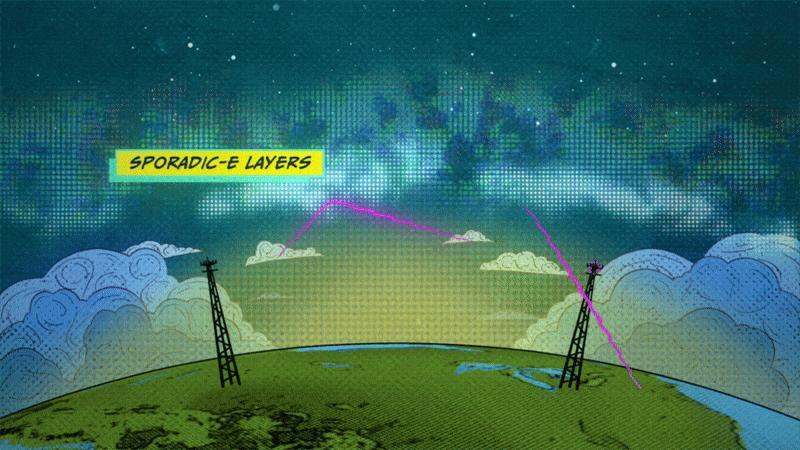
NASA Launches Rockets to Probe Mysterious Radio-Disrupting Clouds
In a bid to unravel the mystery behind high-altitude, cloud-like structures that can disrupt communication systems, NASA has launched a three-week mission from a remote Pacific island. The Sporadic-E ElectroDynamics (SEED) mission, which began on Friday, involves the deployment of rockets to study these enigmatic structures, known as Sporadic-E (Es) clouds. These clouds have the ability to cause pilots and mariners to receive signals from distant regions, mistakenly identifying them as nearby sources.
Es clouds are a type of ionospheric disturbance that occurs when the Earth’s magnetic field interacts with the solar wind. They are characterized by their ability to create unusual ionization patterns in the ionosphere, which can affect radio communications. NASA scientists believe that understanding the behavior of these clouds is crucial for ensuring reliable communication systems, particularly for pilots and mariners who rely on radio signals for navigation and communication.
The SEED mission is centered around the Pacific island of Kwajalein Atoll, which offers a unique environment for studying Es clouds. The island is surrounded by a vast expanse of ocean, making it an ideal location for conducting experiments without interference from nearby radio signals. The mission involves the launch of three rockets, each carrying a suite of instruments designed to collect data on the ionospheric conditions and the behavior of Es clouds.
The rockets, named RockSat-X, will be launched from the Kwajalein Atoll’s Reagan Test Site, a NASA-managed facility that has been used for space research and testing since the 1950s. The RockSat-X system is a collaborative effort between NASA and the University of Colorado’s Laboratory for Atmospheric and Space Physics (LASP). The system consists of a payload section carrying scientific instruments and a guidance system that ensures the rocket reaches the desired altitude and velocity.
During the SEED mission, the RockSat-X rockets will be launched to an altitude of approximately 200 kilometers (124 miles), where they will collect data on the ionospheric conditions and the behavior of Es clouds. The rockets will be equipped with instruments such as cameras, spectrometers, and magnetometers, which will provide scientists with valuable insights into the physical and chemical properties of the ionosphere.
The data collected during the SEED mission will be used to improve our understanding of the ionosphere and the behavior of Es clouds. This knowledge will be crucial for developing more accurate models of the ionosphere, which will ultimately enable the development of more reliable communication systems.
The SEED mission is not only important for understanding the ionosphere, but it also has implications for our daily lives. Radio communication systems, such as those used for navigation and communication, rely on the ionosphere to transmit signals. Understanding the behavior of Es clouds and their effects on radio communications is essential for ensuring that these systems operate reliably.
In addition to its scientific benefits, the SEED mission also has practical applications. The data collected during the mission will be used to improve the accuracy of weather forecasting models, which rely on data from radio signals to predict weather patterns.
The SEED mission is a testament to NASA’s commitment to understanding the Earth’s ionosphere and its effects on our daily lives. By launching rockets from a remote Pacific island, NASA scientists are able to collect data on the ionosphere in a unique and controlled environment.
The SEED mission is a collaborative effort between NASA and several partner organizations, including the University of Colorado’s LASP, the National Oceanic and Atmospheric Administration (NOAA), and the Federal Aviation Administration (FAA). The mission is expected to provide valuable insights into the behavior of Es clouds and their effects on radio communications, ultimately leading to the development of more reliable communication systems.






